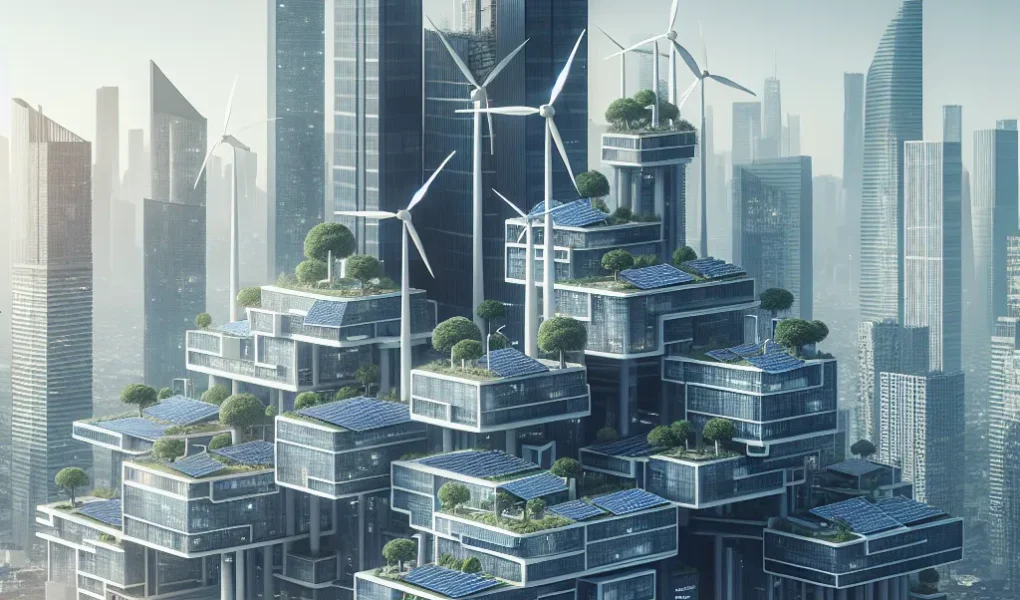Overcoming Challenges of Sustainable Energy in Urban Environments
Implementing sustainable energy solutions in urban environments is a critical aspect of modern city planning. However, this endeavor is not without its challenges. One of the primary obstacles in achieving sustainable energy in urban areas is the limited space for renewable energy infrastructure. Unlike rural areas, urban environments often have a high population density and limited available land, making it difficult to allocate space for large-scale renewable energy projects.
Another challenge is the integration of renewable energy sources into existing urban infrastructure. Retrofitting buildings and city systems to accommodate renewable energy technologies can be complex and costly. Additionally, the intermittent nature of renewable energy sources such as solar and wind power presents challenges in ensuring a reliable energy supply for urban areas.
Furthermore, funding and investment barriers often hinder the implementation of sustainable energy solutions in urban environments. The initial costs of installing renewable energy infrastructure and the need for long-term investment can be daunting for city planners and authorities.
Navigating regulatory and policy frameworks also poses a challenge, as urban areas are subject to various zoning laws, building codes, and energy regulations that can impact the adoption of sustainable energy technologies.
Despite these challenges, there are innovative solutions and strategies that can help overcome these obstacles. Integrated urban planning that considers energy efficiency and sustainability from the outset can optimize land use and infrastructure development. Collaboration between public and private sectors, as well as the community, can help secure the necessary funding and investment for sustainable energy projects in urban environments.
Technology advancements, such as smart grids and energy storage systems, can help mitigate the intermittency of renewable energy sources and ensure a reliable energy supply for urban areas. Additionally, supportive policies, incentives, and streamlined permitting processes can facilitate the integration of sustainable energy solutions in urban environments.
In conclusion, while there are significant challenges in implementing sustainable energy solutions in urban environments, strategic planning, collaboration, technological advancements, and supportive policies can help overcome these obstacles and pave the way for a more sustainable and resilient urban energy landscape.
The Role of Renewable Energy Sources in Urban Development
Implementing sustainable energy solutions in urban environments is crucial for addressing the challenges of climate change and reducing the dependence on fossil fuels. The role of renewable energy sources in urban development has become increasingly significant in achieving these goals.
Renewable energy sources, such as solar, wind, and hydroelectric power, offer a clean and sustainable alternative to traditional energy sources. In urban environments, integrating these renewable energy sources into the energy mix can contribute to reducing greenhouse gas emissions and mitigating the urban heat island effect.
One of the key benefits of incorporating renewable energy sources in urban development is the potential for decentralized energy generation. By harnessing energy from local renewable sources, urban areas can enhance their energy security and resilience, reducing their vulnerability to disruptions in centralized energy supply systems.
Moreover, the adoption of renewable energy technologies in urban environments can stimulate economic growth and create job opportunities in the clean energy sector. This can lead to a more diversified and sustainable urban economy while reducing the environmental impact of energy production and consumption.
In conclusion, the integration of renewable energy sources plays a pivotal role in driving sustainable urban development. By leveraging the potential of solar, wind, and other renewable sources, cities can mitigate environmental impacts, enhance energy security, and foster economic growth, ultimately leading to more resilient and sustainable urban environments.
Innovations in Urban Energy Infrastructure
Implementing sustainable energy solutions in urban environments is a pressing concern in today’s world. One crucial aspect of this effort is the development of innovative urban energy infrastructure. The need for such innovations arises from the increasing demand for energy in cities, as well as the necessity to reduce carbon emissions and combat climate change.
One of the key innovations in urban energy infrastructure is the integration of smart grid technology. By incorporating advanced communication and control systems into the electricity grid, cities can better manage energy generation, distribution, and consumption. This not only improves the overall efficiency of the grid but also enables the integration of renewable energy sources on a larger scale. Smart grids also pave the way for the widespread adoption of electric vehicles, as they can support the increased demand for charging infrastructure.
Another innovative approach is the development of district energy systems, which enable the sharing of heating and cooling energy between buildings. By utilizing centralized energy production, such systems can significantly reduce energy waste and lower greenhouse gas emissions. Additionally, the use of combined heat and power (CHP) technologies in district energy systems allows for the simultaneous generation of electricity and useful heat, further enhancing overall energy efficiency.
Furthermore, the concept of microgrids has gained traction as a resilient and sustainable solution for urban energy infrastructure. These localized grids can operate independently or in conjunction with the main grid, offering greater reliability, resilience, and the potential for increased use of renewable energy resources. Microgrids can be particularly beneficial in urban areas prone to power outages or seeking to integrate distributed renewable energy sources.
Overall, the pursuit of innovative urban energy infrastructure is essential for achieving sustainable energy solutions in urban environments. By embracing smart grid technologies, district energy systems, microgrids, and other innovative approaches, cities can make significant strides towards a more sustainable and resilient energy future.
Community Engagement in Sustainable Energy Solutions
Community Engagement in Sustainable Energy Solutions
Implementing sustainable energy solutions in urban environments requires active involvement and engagement from the local community. Community engagement plays a crucial role in the successful adoption and implementation of sustainable energy initiatives. It involves informing, involving, and empowering community members to participate in decision-making processes and take ownership of sustainable energy projects.
Effective community engagement in sustainable energy solutions begins with education and awareness. It is essential to provide clear and accessible information to the community about the benefits of sustainable energy, the available technologies, and the potential impact on the local environment and economy. Workshops, public forums, and educational campaigns can help in building awareness and understanding among community members.
In addition to education, community engagement also involves seeking input and feedback from the local residents. By consulting the community and incorporating their perspectives, needs, and concerns into the planning and implementation process, sustainable energy projects can be tailored to better suit the unique requirements of the urban environment and its inhabitants.
Furthermore, active engagement can be fostered through participatory decision-making processes. Involving community members in the planning, design, and implementation phases of sustainable energy solutions not only ensures that their voices are heard but also increases the likelihood of long-term acceptance and support for the initiatives.
Empowering the community to actively participate in sustainable energy solutions can lead to a sense of ownership and responsibility, fostering a culture of sustainability and environmental consciousness within the urban environment.
In conclusion, community engagement is a fundamental aspect of implementing sustainable energy solutions in urban environments. By involving and empowering the local community, sustainable energy initiatives can be tailored to address the specific needs of the urban population, leading to greater acceptance, support, and long-term success.
Policy Initiatives for Sustainable Urban Energy
In recent years, urban areas have been at the forefront of efforts to implement sustainable energy solutions. Policy initiatives play a crucial role in driving the transition towards sustainable urban energy. These initiatives encompass a range of measures aimed at promoting renewable energy adoption, increasing energy efficiency, and reducing carbon emissions in urban environments.
One key policy initiative is the development of renewable energy targets and incentives. Many cities have set specific goals for increasing the proportion of energy derived from renewable sources. These targets are often accompanied by financial incentives, tax credits, and rebates to encourage investment in solar, wind, and other renewable energy technologies. Such initiatives not only stimulate the growth of the renewable energy sector but also contribute to the overall reduction of urban greenhouse gas emissions.
Furthermore, promoting energy efficiency in buildings and transportation is another critical aspect of sustainable urban energy policy. Cities have implemented building codes and standards that require new constructions to meet high energy efficiency criteria. Additionally, retrofitting existing buildings to improve energy performance and implementing measures to promote public transportation, cycling, and walking contribute to more sustainable urban energy use.
Policy initiatives also focus on fostering innovation and investment in sustainable energy technologies. This includes funding research and development projects, creating business incubators for clean energy startups, and establishing partnerships with private sector entities to drive investment in sustainable urban energy solutions.
In conclusion, policy initiatives play a pivotal role in the transition towards sustainable urban energy. By setting targets, promoting energy efficiency, and fostering innovation, cities can pave the way for a more sustainable and environmentally friendly energy landscape.
The Future of Sustainable Energy in Cities
As urbanization continues to accelerate, the demand for sustainable energy solutions in cities has never been more pressing. The future of sustainable energy in urban environments relies on innovative technologies and holistic approaches that address the unique challenges of densely populated areas.
One key aspect of the future of sustainable energy in cities is the integration of renewable energy sources into urban infrastructure. Solar panels, wind turbines, and hydroelectric systems can be incorporated into the urban landscape to generate clean energy and reduce reliance on fossil fuels. Additionally, advancements in energy storage technologies are crucial for ensuring a consistent power supply from intermittent renewable sources.
Furthermore, the development of smart grids and energy-efficient building designs is essential for creating sustainable urban environments. Smart grids enable better management of energy distribution and consumption, optimizing the use of renewable energy. Similarly, sustainable building designs, including passive solar architecture and green roofs, contribute to energy efficiency and reduce the overall environmental impact of urban development.
In addition to technological innovations, the future of sustainable energy in cities depends on robust policy frameworks and public engagement. Local governments play a critical role in promoting sustainable energy initiatives through incentives, regulations, and long-term planning. Equally important is raising public awareness and fostering community involvement to drive the adoption of sustainable energy practices at the grassroots level.
In conclusion, the future of sustainable energy in cities hinges on a multi-faceted approach that encompasses technological advancements, supportive policies, and active community participation. By embracing these elements, urban environments can pave the way for a more sustainable and resilient energy future.

